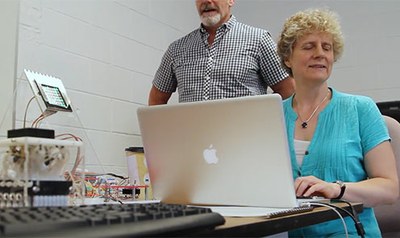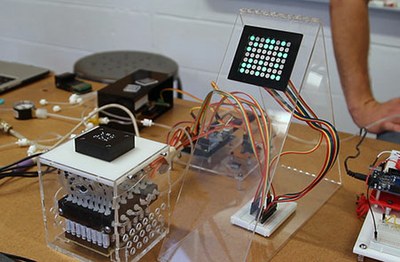Sile O’Modhrain, a blind associate professor from the University of Michigan has teamed up with engineering researchers to develop a Braille display that could show the equivalent of a whole tablet screen at once.

The tablet would be able to translate more than just text. It would render graphs, charts, maps and complicated equations in a way that the blind could understand with their fingertips.
“What we’re trying to build in this project is full-page tactile screen for something like a Kindle or an iPad where you could just display refreshable text in real time,” said O’Modhrain. “Relative to what’s done today and how that’s done, it’s a complete paradigm shift.”
O’Modhrain teamed up with Brent Gillespie, an associate professor of mechanical engineering, and doctoral student Alex Russomanno to figure out how to make e-reading for the blind more efficient and a less expensive.
According to the University of Michigan, current commercial one-line Braille displays cost about $5,000 so a device of this nature incorporating that technology would end up costing about $50,000. The U-M researchers are trying to get the functionality into a device that costs just $1,000 instead.
The researchers believe that the way to do this is with microfluidics, a technique that involves tiny chips with channels that guide the flow of liquid or air.

“We use the equivalent of electronic logic and circuitry,” Russomanno said. “When I say that, I’m referring to the way a computer works, with transistors and resistors. Except our circuit is not electronic at all. It’s fluidic. Instead of high voltage and low voltage you have high pressure and low pressure, and instead of electric current flow you have fluid flow and you can achieve the same basic logic features.”
The system uses air to move bubbles of pressurized air that can either raise or lower the Braille dots.
The researchers also said that they can mold as many Braille dots as they like with one batch process which will provide a more cost-efficient method for creating a full-page display.
Currently the team is working on shrinking their fluidic circuits to fit under Braille dots (smaller than a peppercorn). The goal is a system where up to 10,000 dots are powered by 10,000 microfluidic chips.
Learn more in the video below.

Comments are closed, but trackbacks and pingbacks are open.